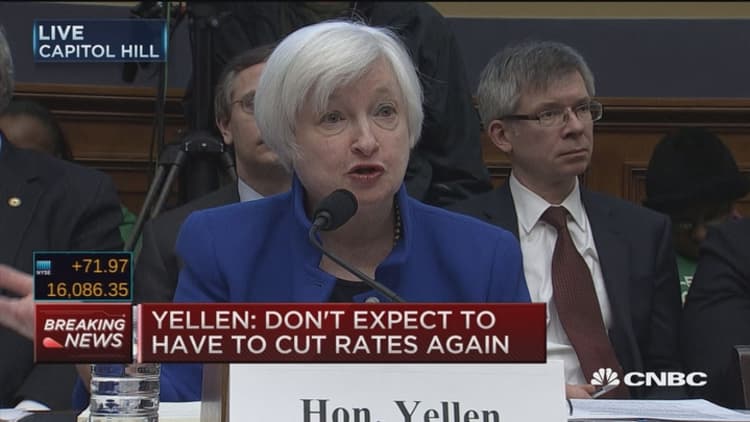
If the Fed's efforts to normalize policy and show that it was right all along are to have a happy ending, it will need one thing: inflation.
That's been an elusive feature of the economy so far, at least according to the gauges U.S. central bank officials like to use. Inflation has been even harder to come by recently, with a year's worth of lackluster readings hampering policy.
Wednesday brought some good news on that front, with the producer price index registering a 0.1 percent gain that, while meager, topped Wall Street expectations for a 0.2 percent drop. The market next will focus on data Friday, when the core consumer price index is expected to register a 0.2 percent increase that would translate into a 2.1 percent annualized gain excluding food and energy. The headline measure is projected to decline 0.1 percent.
Read More $12.3 trillion of QE has added up to...this?
The trend would get the Fed closer to its 2 percent target and give it some breathing room for additional rate hikes. However, the market does not expect that to happen.
Traders have been pricing in a declining chance of future rate increases. A tool the CME uses to gauge rate hike probability indicates no chance until at least February 2017, while the fed funds futures contract shows no additional moves priced in until December 2017.
Bank of America Merrill Lynch on Wednesday highlighted the disparate views between the markets and the Fed, which is currently forecasting four hikes in 2016. Ethan S. Harris, BofAML's global economist, said he expects two rate rises this year — one in June and another in December.
For that to happen, inflation will have to pick up. And for inflation to increase, one of the things that will have to occur is a slowing in the appreciation of the , for which the real effective exchange rate has hit its highest level since May 2004. Harris believes the greenback's momentum is slowing.
Read More Negative rates 'catalyst' for market woes: Pimco
"If our currency strategists are correct, and the trade weighted dollar continues to rise at a moderate pace, the point of maximum imported deflation is steadily moving behind us," Harris said in a note to clients.
Other economists have shown optimism as well.
The PPI move "led by a rise in service prices helps reignite confidence that inflation pressures are on the rise," said Lindsey M. Piegza, chief economist at Stifel Fixed Income. A one-year high in PPI is "a welcome step in the right direction, at least from the standpoint of policy officials desperate to stoke inflation pressures," Piegza added in a note.
For its part, the Fed has stuck to a position that it is confident that, despite the current downward pressures, inflation is on a longer-term trajectory toward the 2 percent target. That's been a harder sell lately.
Wells Fargo strategists on Tuesday retreated from their hopes that inflation would hit 2 percent by year's end, lowering their forecast to 1.4 percent even though they agreed with the Fed's opinion that falling energy prices are "transitory."
Read More BofA: Market sees 50-50 chance of recession
Wall Street was watching the release Wednesday of minutes from the January Federal Open Market Committee for language indicating whether the FOMC had pulled back from its inflation optimism.
For investors, the trend is critical. If financial conditions continue to tighten and the Fed sees itself drifting farther from its inflation goal, it could change course and loosen policy after hiking interest rates for the first time in nine years.
In that case, BofAML's Harris sees possible options including changing guidance on inflation targets, merely going on hold, or reducing rates and issuing stronger guidance for future hikes.
More serious actions, he said, could include another "Operation Twist," which would see the Fed buying and selling $408 billion in bonds coming due in the next two years; instituting a fourth round of quantitative easing, or going to negative rates on what it pays banks to store excess reserves, an option that has scared some market participants.
That's hardly a position in which the Fed hopes to find itself.
"Depending on how quickly the economy/markets deteriorate, the Fed could make multiple steps with one announcement," Harris wrote. "They would not want to fritter away ammunition with steps that don't look meaningful relative to the shocks. In other words, they would resort to 'shock and awe.'"






